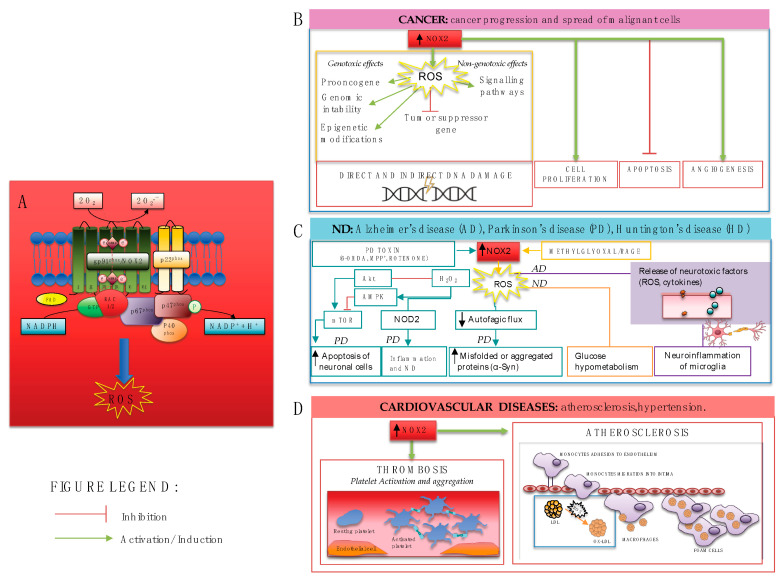Figure 2.
(A) NOX2 activation leads to ROS production and contributes to several diseases including (B) carcinogenesis, through genotoxic and non-genotoxic ways which may cause direct and indirect damage to DNA, cancer cell proliferation, increased angiogenesis, and inhibition of apoptosis; (C) neurodegenerative diseases, through different mechanisms such as apoptosis of neuronal cells in PD via AMPK and Akt/mTOR signaling pathways, the compromising of autophagic flux, neuroinflammation of microglia, and consequent release of neurotoxic factors; (D) cardiovascular diseases, such as atherosclerosis and thrombosis through platelet activation, aggregation, and recruitment.

